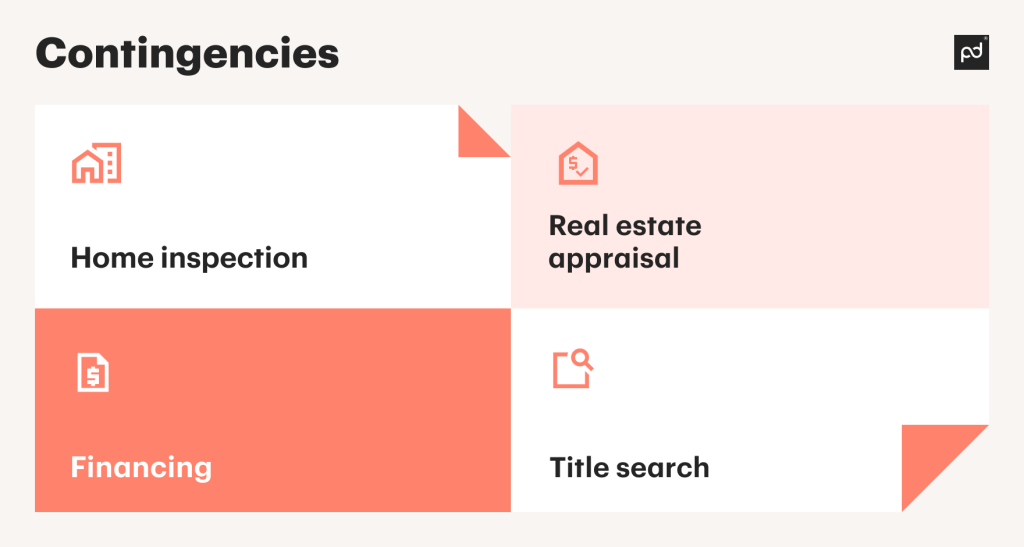A sales and purchase agreement (SPA) is a legally binding contract between a buyer and a seller that covers the terms and conditions for the transfer of real estate ownership.
Also referred to as a purchase and sale agreement (PSA), the document is signed after a buyer and seller agree on the price of a real estate transaction.
It outlines contingencies and conditions to be met as well as the closing date — the date when a real estate purchase agreement (not to be confused with a PSA) is executed to finalize the sale.
Signing an SPA places the parties under contract regarding the sale of a property.
What are the basic elements of a sales and purchase agreement?
The SPA includes details such as parties involved, property description, purchase price, terms, contingencies, closing date, costs, and signatures.
Based on the property type and state laws and regulations, these contract components might differ for various local sales and purchase agreements.
Still, there are some fundamentals required for a successful real estate transaction. Let’s break them down.

Parties involved
The SPA comprises a buyer and seller — they’re the key parties involved, and the agreement should comprise their full names, addresses, and contact information.
The parties must have contractual capacity to sign and must enter voluntarily into the agreement — with no signs of influence, fraud, or misrepresentation.
Most often, the buyer and seller have a dialogue through their legal representatives — real estate agents (realtors, or brokers).
The sales and purchase agreement is usually drafted by the seller’s agent or a real estate attorney after the parties agree on a purchase price.
Property description
The description of the property being sold comprises its legal address, type, and legal land description, as well as all items and fixtures to be included in the sale.
Among the latter are windows, cooling and heating equipment, doors, bathroom fixtures, and built-in kitchen appliances.
The sales and purchase agreement also legally covers any disclosures required by the local law, including:
- Building defects (termite damage, plumbing concerns, condensation, etc.)
- Location and status of wells on the property
- Lead-based paint hazards in the dwelling
- Personal interest
- Potential annexation
- Facilities taxes
Purchase price, terms, and earnest money
The contract defines the agreed-upon total purchase price, the terms of the transaction, and the means by which the transaction will be completed (paid for with cash, a mortgage initiated with a cash down payment and secured by the deed of the property, etc.).
An SPA also covers details on the earnest money deposit — the amount of money placed into escrow to show the buyer’s good faith in the home purchase.
The parties stipulate the date when the deposit should be made and agree on how and when the remaining balance will be paid (the closing date).
The earnest money rate might vary, but usually it’s about 1% to 3% of the home’s value. Considering the fact that the median sales price of US homes is around $400,000, the deposit can equal $4,000 to $8,000, plus any legal or other associated fees.
The seller can add a contingency stipulating that the buyer forfeit the earnest money deposit if the home sale does not go through due to problems on the buyer’s end — for example, failure to secure financing.
Conversely, if the seller fails to meet their end of getting contingencies met — for example, not replacing a roof after agreeing that the sale of the house is contingent upon doing so — the buyer’s earnest money is fully refundable.
This deposit, along with placing the property under contract, doesn’t guarantee closing the deal, but it takes the property off the market until the contingencies are met and the sale closes — or until the deal falls apart, at which point the seller can put the listing back on the market.
Contingencies
The real estate sales and purchase agreement is always contingent upon certain conditions that must be met before the closing date for the real estate transaction to proceed.
Some of the more common contingencies are:

Home inspection
The seller must provide full access to the property for a third-party inspection within a specified deadline.
The financing here is the buyer’s responsibility, and the inspection contingency is met when the buyer is satisfied with the results of the assessment.
(Note that if the inspection comes back problematic, the buyer may have leverage to negotiate the deal.)
Real estate appraisal
This must be performed by the lender to make sure the listed value of the home is justified.
If the lender concludes the opposite, the buyer can start negotiating a lower purchase price.
At this stage, the seller might also be requested to make repairs at their own expense.
If the appraisal contingency isn’t met, the buyer has the right to cancel the agreement.
Financing
Buyers can include financing contingencies to protect themselves in case they fail to obtain the necessary funding.
Such a condition guarantees the buyer can safely abandon the deal — but the seller may be unwilling to write these into the contract.
Title search
The seller must provide a warranty that guarantees the actual possession of the property, so that the buyer can be confident about the title transfer upon deal closing.
For that purpose, a title search by an authorized third-party company is conducted.
Closing details
When all the covenants and conditions have been confirmed, the parties successfully move toward the closing date — the particular day and time when the real estate purchase agreement is signed.
Possession of the property and its title will be officially transferred from the seller to the buyer on this date. At the time of conveyance, closing costs (expenses beyond the down payment) are settled — for both the seller and the buyer.
Such expenses might include real estate appraisal and home inspection costs, commissions for both buyer and seller’s real estate agents (a cost traditionally picked up by the seller), real estate attorney and title insurance fees, property taxes, escrow fees, and more.
Signatures
All the parties involved must now sign the purchase agreement, and once signed, it supplants the SPA (again, sometimes referred to as PSA) and becomes a legally binding document that completes that property transfer.
The signing of the real estate purchase agreement means all the contingencies are met, and parties are bound by the terms of the sale set forth therein.
Property is transferred from the seller to the buyer (if paid in full), or placed in the buyer’s name and the financial institution where the buyer has secured a mortgage.
Create and sign your SPAs faster
PandaDoc offers an extensive library of purchase agreement templates that can be used for reference and customized to address your specific real estate needs.
Underpinned by powerful collaboration features like redlining, inline commenting, and document tracking, you can facilitate the whole negotiation workflow, i.e., slash the document setup time and eliminate errors.
- Property Sale Agreement Template: Use this template to fill out your purchase and sale agreement with all the details we’ve covered in this article. Everything you need as either a buyer or a seller to effectively (and legally) get the ball rolling.
- Contract Addendum Template: Use this template should the need arrive to modify the existing purchase and sale agreement’s terms and conditions. (We’ll go into detail about adding an addendum below.)
The process is further streamlined by using our legally binding e-signature, which automatically requests and collects e-signatures and e-sign files from practically any tool.
An extra layer of security is guaranteed through ESIGN and UETA compliance, electronic certificates for every signed document, recipient verification via passcode or SMS text, and an audit trail feature.
What’s NOT included in a sale and purchase agreement?
Note that signing the SPA doesn’t guarantee closing the deal — as mentioned above, the purchase agreement finalizes all real estate transactions.
And that’s key, because certain things are bound to come up before the sale closes, aspects that are not part of the SPA but must get ironed out before finalizing the deal.
That’s where a real estate addendum comes in.
While the purchase and sale agreement describes the initial terms of the transaction, it may require an addendum (or more than one) added to it — a separate document that clarifies or adds specific conditions and information to be met before the contract is executed.
An addendum could include:
- Changes in the closing date, inspection periods — or even the purchase price if the parties decide to re-negotiate it due to market fluctuations
- Buyer’s request to leave or remove certain appliances (refrigerator, washer, etc.) in the home
- Notifications saying the property is being purchased in its current condition, no repairs will be made by the seller (anything revealed during the home inspection has to be repaired by the buyer)
- Contingencies communicating that to complete the transaction, the buyer must be able to secure a loan
- The total breakdown of all the actual closing costs, including the buyer’s request to divide the portion of these expenditures between the parties
Keep in mind that the SPA is an important step that signifies that the sale is moving the parties from under contract to the pending sale stage, with the goal of completing the home purchase on the closing date.
Can I back out of the purchase and sale agreement?
The buyer can legally back out of the agreement without losing their earnest money if they have a valid reason, such as:
- discovering undisclosed repair issues during the inspections
- finding property title issues
- becoming ineligible for financing (if stipulated as a contingency)
- being unable to sell their old home (if stipulated as a contingency)
Note that the right to terminate the sale should be described in the SPA. If buyers want to quit the agreement for a reason not covered by a contingency, they lose their earnest money.
Manage your SPAs with PandaDoc
Real estate deals are complex and often involve a lot of paperwork — but they no longer have to. With PandaDoc, you can notably streamline the collaboration and e-signing of real estate transactions with all parties involved.
You can access our 14-day free trial to leverage all the tools you need to finalize your agreements.
Disclaimer
PandaDoc is not a law firm, or a substitute for an attorney or law firm. This page is not intended to and does not provide legal advice. Should you have legal questions on the validity of e-signatures or digital signatures and the enforceability thereof, please consult with an attorney or law firm. Use of PandaDocs services are governed by our Terms of Use and Privacy Policy.


